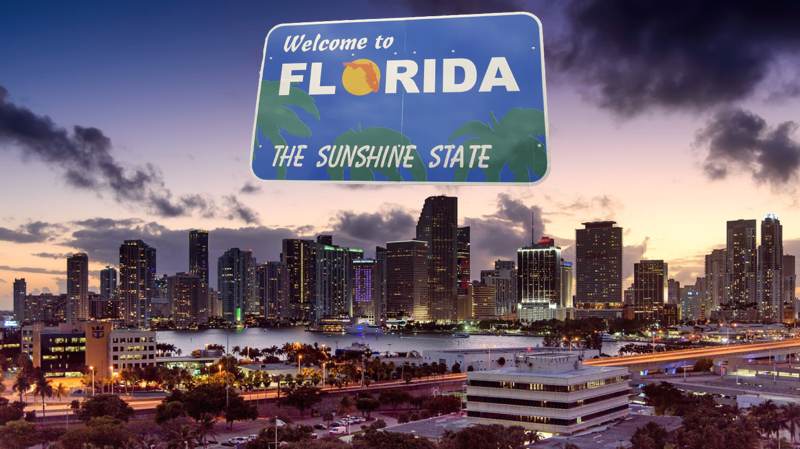Analysis from global reinsurance firm Swiss Re reveals that, while building code improvements in Florida have dramatically reduced the potential for insured losses from storms and hurricanes, that reduction is dwarfed by the huge gains in exposure in the state.
 Swiss Re’s natural catastrophe risk experts used the reinsurance firm’s in-house risk model for North Atlantic tropical cyclones to conduct an analysis and concluded that improvements in construction and building standards in Florida since the 1970s have reduced the magnitude of annual losses expected to result from hurricanes by some 90-100%.
Swiss Re’s natural catastrophe risk experts used the reinsurance firm’s in-house risk model for North Atlantic tropical cyclones to conduct an analysis and concluded that improvements in construction and building standards in Florida since the 1970s have reduced the magnitude of annual losses expected to result from hurricanes by some 90-100%.
But, while Florida’s improved building codes reduce the risk of losses on the one hand, on the other the rapid exposure growth in the state significantly outweighs their effect.
The building code gains have been “dwarfed by higher modeled loss expectations that arise from the state’s population growth which has tripled to more than 22 million since the 1970s,” Swiss Re’s experts stated, as well as the increased value of assets at risk.
The reinsurers analysis looks specifically at last year’s hurricane Ian and found that Fort Myers, where that storm made landfall, is an area where exposure growth was more than double the pace of reductions from better construction habits.
“Based on Swiss Re’s models, annual expected losses in Fort Myers due to population growth have risen 340-350% from 1970s levels, surpassing the building standards-driven gains in Swiss Re models of 150%,” the reinsurer explained.
Looking more broadly, across the United States, rapidly expanding values exposed outpace the resilience related effects of construction standards considerably.
Population growth is winning in fast-growing metropolitan areas in the US Southeast and Gulf States, such as Houston, Texas where modeled expected loss from population growth has risen by a factor of 200-210%, Swiss Re said.
Major northeast US cities, like New York, have grown more slowly over the period since the 70’s, but “are hardly immune to expanding loss risks due to less storm-resistant construction given generally weaker and less-frequent hurricanes, as well as lower risk awareness,” Swiss Re cautions.
Exposure growth and increasing values-at-risk in catastrophe and weather exposed regions have been a significant driver of both insurance and reinsurance losses, as well as renewal prices, as the industry seeks to catch-up.
Swiss Re’s analysis lays bare the issues related to exposures increasing from population increases, as well as the build-up of high value assets in a region.
This is a trend that continues today, with Florida a region still experiencing significant migration to it from other states and while hurricane hardened construction standards are increasingly the norm, with the exposure levels rising rapidly it still implies growing industry loss quantum when major hurricanes strike.
Swiss Re highlights the flood risk that is also building up, as people move to exposed coastlines, such as in Florida.
The reinsurance firm highlights an OECD-sponsored study that estimates the cost of necessary upgrades for flooding in more than 130 coastal cities worldwide at $50 billion annually.
Noting that this is just a tiny fraction of the study’s $1 trillion per-year loss estimate, should nothing be done to increase flood resilience for those cities.
“Swiss Re believes that by partnering with the private and public sector, re/insurers can drive mitigation of and adaptation to rising nat cat risk,” the company explained.
More broadly for the industry, the inflationary effects of population and exposure growth in severe weather and catastrophe prone regions of the world, alongside economic inflation, supply-chain effects, social inflation and other factors, all implies insurance and reinsurance rates need to remain higher to cover off the ever-increasing expected loss potential in these regions.
With Florida still the largest regional exposure in the insurance-linked securities (ILS) and catastrophe bond market, these exposure trends need to be accounted for in the ILS market’s risk analysis and pricing.
 View all of our Artemis Live video interviews and subscribe to our podcast.
View all of our Artemis Live video interviews and subscribe to our podcast.
All of our Artemis Live insurance-linked securities (ILS), catastrophe bonds and reinsurance video content and video interviews can be accessed online.
Our Artemis Live podcast can be subscribed to using the typical podcast services providers, including Apple, Google, Spotify and more.































